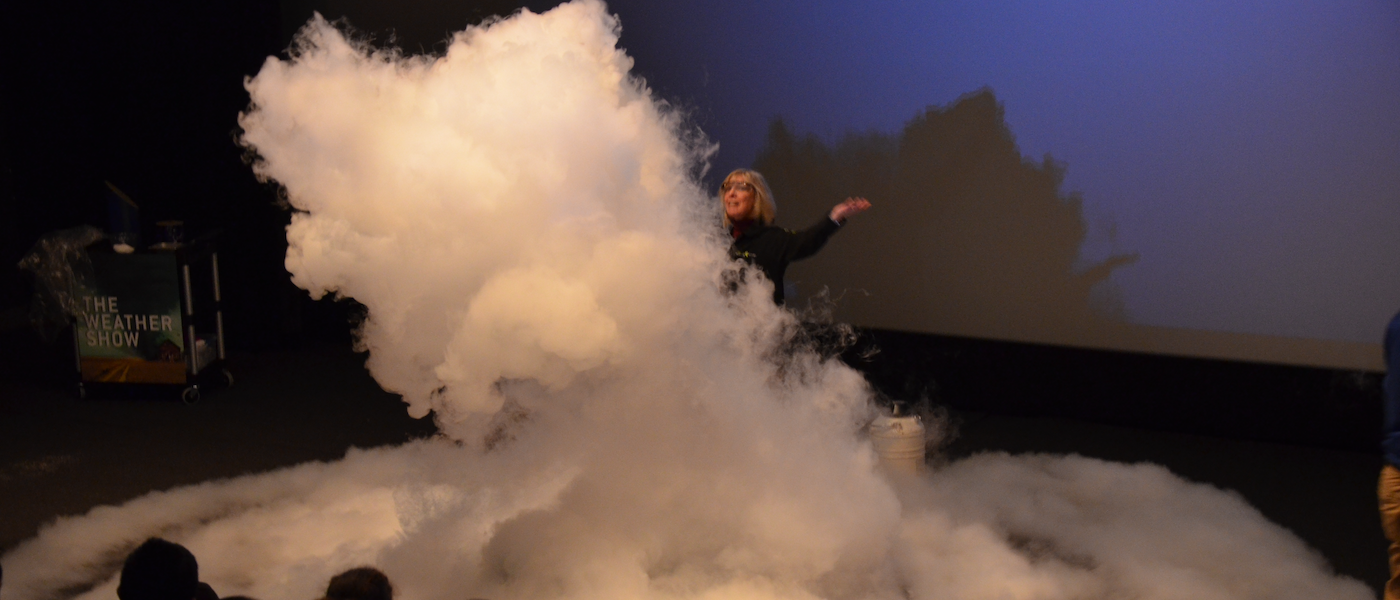Stage Shows
Have your students or group experience larger-than-life science demonstrations with one of our stage shows, online, at your school, or at LSC.
Unless otherwise noted, the programs are available for 200+ students.
For more information or reservations, call 201.253.1337, email partnerships@lsc.org, or fill out our info form.
Animal Ambassadors (Grades 3-5, 45 Minutes)
This program is for a maximum of 60 students and available seasonally.
Meet some of Liberty Science Center’s amazing live animals in this exciting show-and-tell experience, students will discover how different animals are specially adapted to survive in their unique environments. With up-close encounters and expert educators, this program brings science to life for up to 60 curious learners.
Eco Explorers (Grades Pre-K-2, 30-45 Minutes)
Join us for an eco-adventure as we explore the wonders of biodiversity! On this imaginary journey to the rain forest, we’ll use props and storytelling to discover a variety of plants and animals, each with its own diet and role in the ecosystem. A curious guide leads the way, with plenty of opportunities for audience participation. Please note there are no live animals in this program.
Reactions in Action (Grades 6-8, 45 Minutes)
This program is for a maximum of 60 students.
What if you could watch substances fizz, flame, or change color right before your eyes—like a front-row seat to the science of change? In this exciting live chemistry show, we’ll put mystery materials to the test and uncover the hidden clues that reveal real chemical reactions. From dramatic transformations to surprising scents, get ready for a science experience that’s anything but ordinary! This show has a capacity of 60 students.
Science Circus Jr. (Grades Pre-K-2, 30-45 Minutes)
Let’s think big together and investigate the effects of forces as you’ve never seen them before! Be “shocked” and amazed by the pushes and pulls involving electricity, and “gasp” in awe at the air all around us as we demonstrate the science behind attraction and repulsion. Explore how forces affect objects in our new Junior Science Circus program designed to engage our youngest scientists.
Science Circus (Grades 3-8, 45 Minutes)
It’s our most popular show! Explore the positives and negatives of static electricity, the subzero temperatures of liquid nitrogen, the states of matter, and the immense pressure of air. Includes more than a dozen thrilling experiments, and, as always, we use lots of volunteers. It’s a great way to showcase the concepts of energy and matter.
Sportacular (Grades 6-8, 45 Minutes)
Dive headfirst into the exhilarating world of physics as we unveil the astounding secrets behind the mesmerizing motion of athletes and equipment. This high-energy assembly program brings the laws of physics to life, showcasing the mind-boggling influence of gravity, the explosive power of Newton's Laws of Motion, and the incredible distribution of force that powers your favorite sports. Get ready for a heart-pounding experience, where these concepts come to life through real sports equipment and a handful of eager volunteers.
Sportacular: Little League (Grades 3 - 5, 45 Minutes)
Welcome to the thrilling world of physics, where we uncover the powerful forces that shape the motion of athletes and sports equipment. This high-energy program explores the fascinating effects of gravity, the transfer of energy, and the distribution of forces that make every move in sports possible. Through interactive demonstrations with real sports equipment and enthusiastic volunteers, you’ll witness firsthand how these forces work together to drive the speed, agility, and power behind every play. Get ready for a dynamic experience that brings physics to life!
